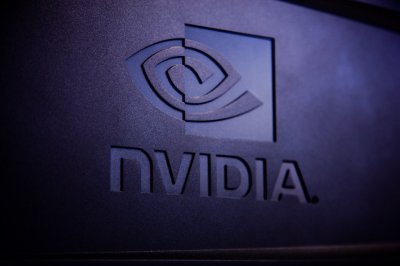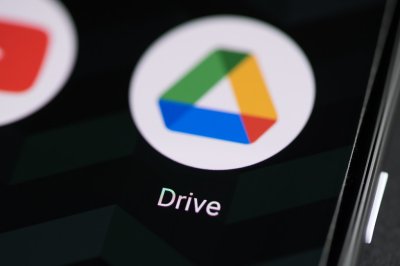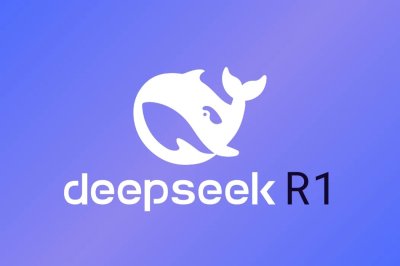Nvidia Democratizes AI Animation: Audio2Face Goes Open Source, Unleashing Realistic Avatars for All
@devadigax25 Sep 2025

Nvidia, a global leader in AI computing, has made a significant move that promises to revolutionize the landscape of 3D content creation. The company announced it is open-sourcing Audio2Face, its cutting-edge AI-powered tool designed to generate remarkably realistic facial animations for 3D avatars purely from audio input. This strategic decision means that developers, creators, and researchers worldwide can now freely access and integrate this powerful technology, previously a key component within Nvidia's Omniverse platform, into their own projects and workflows.
The open-sourcing of Audio2Face marks a pivotal moment for digital animation. Historically, creating believable facial expressions for 3D characters has been one of the most time-consuming and technically challenging aspects of animation. It often required specialized motion capture studios, highly skilled animators performing manual keyframing, or complex rigging processes, all of which demanded significant resources, budget, and expertise. Audio2Face simplifies this arduous process dramatically, using advanced deep learning models to translate spoken words and their underlying emotional nuances directly into expressive, lifelike facial movements. The implications for industries ranging from gaming and film to virtual reality and the burgeoning metaverse are profound.
At its core, Audio2Face leverages sophisticated neural networks trained on vast datasets of human speech and corresponding facial movements. When an audio file is fed into the system, the AI analyzes the phonemes (individual sounds), intonation, pitch, and emotional tone. It then dynamically generates corresponding facial blend shapes and morph targets on a 3D character model in real-time or near real-time. This capability not only ensures lip-sync accuracy but also captures subtle non-verbal cues, like eyebrow raises, changes in gaze, and cheek movements, which are crucial for conveying emotion and personality, thereby enhancing the avatar's believability and connection with an audience.
The decision to open-source Audio2Face aligns with a broader industry trend towards democratizing powerful AI tools. By making the underlying framework and code accessible, Nvidia is fostering a vibrant ecosystem of innovation. Developers can now modify, extend, and integrate Audio2Face into custom pipelines, experiment with new applications, and contribute to its further development. This collaborative approach often leads to rapid advancements and the emergence of unforeseen use cases that would be challenging to achieve within a proprietary, closed environment. It lowers the barrier to entry for independent creators and smaller studios who may lack the resources for traditional high-end animation solutions.
The impact of this technology on the gaming industry is immense. Imagine NPCs (non-player characters) in open-world games having dynamic, unscripted conversations with players, their faces accurately reflecting every spoken word and emotion without requiring pre-recorded animations for every line. This could lead to vastly more immersive narratives and engaging character interactions. For film and virtual production, Audio2Face can accelerate pre-visualization, allow for rapid iteration on character performances, and enable independent filmmakers to achieve Hollywood-level facial animation quality at a fraction of the cost. Digital doubles and virtual presenters could be brought to life with unprecedented ease and realism.
Beyond entertainment, the metaverse and virtual worlds stand to benefit significantly. As users increasingly interact through digital avatars, the need for expressive and believable virtual identities becomes paramount. Audio2Face can empower individuals to create avatars that genuinely reflect their personality and convey emotions naturally, making virtual communication more engaging and authentic. Furthermore, applications in education, virtual assistants, and even telepresence could see a major leap forward. Imagine AI tutors or virtual customer service agents that can express empathy and understanding through realistic facial animations, fostering more natural and effective human-computer interaction.
Nvidia’s open-sourcing strategy is not an isolated event but rather a testament to its commitment to leading the charge in AI and the development of the Omniverse, its platform for building and operating metaverse applications. Audio2Face was originally a key microservice within Omniverse, demonstrating the platform’s capabilities in real-time 3D simulation and collaboration. By opening this technology, Nvidia is effectively seeding the wider developer community with a powerful building block, encouraging more widespread adoption of its technologies and strengthening its position as a foundational provider in the age of AI-driven digital creation.
While the potential benefits are vast, the open-sourcing of such powerful AI tools also necessitates a mindful approach to ethical considerations. Technologies capable of generating highly realistic human-like content can be misused, raising concerns about deepfakes, misinformation, and digital identity manipulation. As Audio2Face becomes more accessible, the industry and community will need to collectively address the challenges of responsible AI development, ensuring that robust safeguards and ethical guidelines are in place to prevent malicious applications and promote beneficial uses.
Ultimately, Nvidia's decision to open-source Audio2Face represents a monumental step forward in democratizing advanced AI animation. It empowers a new generation of creators, accelerates innovation across multiple industries, and paves the way for a future where digital characters are not just visually stunning but also emotionally resonant and incredibly lifelike. As developers begin to explore the full potential of this technology, we can anticipate a paradigm shift in how 3D content is created, experienced, and integrated into our increasingly digital lives.
The open-sourcing of Audio2Face marks a pivotal moment for digital animation. Historically, creating believable facial expressions for 3D characters has been one of the most time-consuming and technically challenging aspects of animation. It often required specialized motion capture studios, highly skilled animators performing manual keyframing, or complex rigging processes, all of which demanded significant resources, budget, and expertise. Audio2Face simplifies this arduous process dramatically, using advanced deep learning models to translate spoken words and their underlying emotional nuances directly into expressive, lifelike facial movements. The implications for industries ranging from gaming and film to virtual reality and the burgeoning metaverse are profound.
At its core, Audio2Face leverages sophisticated neural networks trained on vast datasets of human speech and corresponding facial movements. When an audio file is fed into the system, the AI analyzes the phonemes (individual sounds), intonation, pitch, and emotional tone. It then dynamically generates corresponding facial blend shapes and morph targets on a 3D character model in real-time or near real-time. This capability not only ensures lip-sync accuracy but also captures subtle non-verbal cues, like eyebrow raises, changes in gaze, and cheek movements, which are crucial for conveying emotion and personality, thereby enhancing the avatar's believability and connection with an audience.
The decision to open-source Audio2Face aligns with a broader industry trend towards democratizing powerful AI tools. By making the underlying framework and code accessible, Nvidia is fostering a vibrant ecosystem of innovation. Developers can now modify, extend, and integrate Audio2Face into custom pipelines, experiment with new applications, and contribute to its further development. This collaborative approach often leads to rapid advancements and the emergence of unforeseen use cases that would be challenging to achieve within a proprietary, closed environment. It lowers the barrier to entry for independent creators and smaller studios who may lack the resources for traditional high-end animation solutions.
The impact of this technology on the gaming industry is immense. Imagine NPCs (non-player characters) in open-world games having dynamic, unscripted conversations with players, their faces accurately reflecting every spoken word and emotion without requiring pre-recorded animations for every line. This could lead to vastly more immersive narratives and engaging character interactions. For film and virtual production, Audio2Face can accelerate pre-visualization, allow for rapid iteration on character performances, and enable independent filmmakers to achieve Hollywood-level facial animation quality at a fraction of the cost. Digital doubles and virtual presenters could be brought to life with unprecedented ease and realism.
Beyond entertainment, the metaverse and virtual worlds stand to benefit significantly. As users increasingly interact through digital avatars, the need for expressive and believable virtual identities becomes paramount. Audio2Face can empower individuals to create avatars that genuinely reflect their personality and convey emotions naturally, making virtual communication more engaging and authentic. Furthermore, applications in education, virtual assistants, and even telepresence could see a major leap forward. Imagine AI tutors or virtual customer service agents that can express empathy and understanding through realistic facial animations, fostering more natural and effective human-computer interaction.
Nvidia’s open-sourcing strategy is not an isolated event but rather a testament to its commitment to leading the charge in AI and the development of the Omniverse, its platform for building and operating metaverse applications. Audio2Face was originally a key microservice within Omniverse, demonstrating the platform’s capabilities in real-time 3D simulation and collaboration. By opening this technology, Nvidia is effectively seeding the wider developer community with a powerful building block, encouraging more widespread adoption of its technologies and strengthening its position as a foundational provider in the age of AI-driven digital creation.
While the potential benefits are vast, the open-sourcing of such powerful AI tools also necessitates a mindful approach to ethical considerations. Technologies capable of generating highly realistic human-like content can be misused, raising concerns about deepfakes, misinformation, and digital identity manipulation. As Audio2Face becomes more accessible, the industry and community will need to collectively address the challenges of responsible AI development, ensuring that robust safeguards and ethical guidelines are in place to prevent malicious applications and promote beneficial uses.
Ultimately, Nvidia's decision to open-source Audio2Face represents a monumental step forward in democratizing advanced AI animation. It empowers a new generation of creators, accelerates innovation across multiple industries, and paves the way for a future where digital characters are not just visually stunning but also emotionally resonant and incredibly lifelike. As developers begin to explore the full potential of this technology, we can anticipate a paradigm shift in how 3D content is created, experienced, and integrated into our increasingly digital lives.
Comments
Related News

Beyond the Mic: Instagram Denies Eavesdropping, But AI's Predictive Power Redefines Digital Privacy
@devadigax | 01 Oct 2025
@devadigax | 01 Oct 2025

Microsoft 365 Premium Redefines AI Productivity, Bundling Copilot to Rival ChatGPT Plus Pricing
@devadigax | 01 Oct 2025
@devadigax | 01 Oct 2025

Wikimedia's Grand Vision: Unlocking Its Vast Data Universe for Smarter Discovery by Humans and AI
@devadigax | 30 Sep 2025
@devadigax | 30 Sep 2025

Google Drive Fortifies Defenses with New AI-Powered Ransomware Detection
@devadigax | 29 Sep 2025
@devadigax | 29 Sep 2025

The DeepSeek Phenomenon: Unpacking the Viral AI Chatbot from a Leading Chinese Lab
@devadigax | 29 Sep 2025
@devadigax | 29 Sep 2025
 AI Tool Buzz
AI Tool Buzz